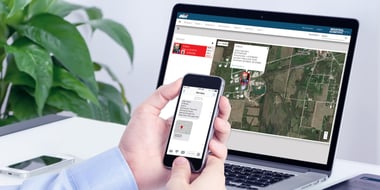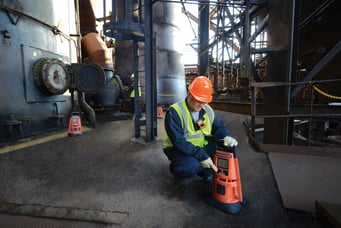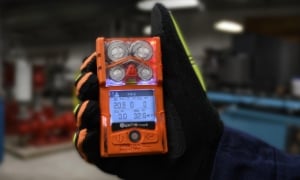When it comes to keeping your employees safe from gas hazards, creating a reliable gas detection, maintenance, and safety program might feel as daunting as climbing Mount Everest. If you have the right tools in place and are properly prepared, you’ll ascend the mountain successfully and with ease. But if you don’t have the right equipment, not only will it quickly become an overwhelming task, but you’re also bound to fail.
However, unlike climbing Mount Everest, implementing a complete gas detection solution for your team doesn’t need to be the most difficult challenge you ever face. It’s as simple as connecting your gas detectors to the Industrial Internet of Things (IIoT) with cloud-based software that can provide real-time analytics and status updates on gas hazards and worker safety.
When building an IIoT-connected gas detection program, ensuring your people are safe from gas hazards is the No. 1 priority; however, it’s important to consider how other aspects such as communication, day-to-day operations, visibility into site hazards, and more, impact your gas detection program and the overall safety of your workers.
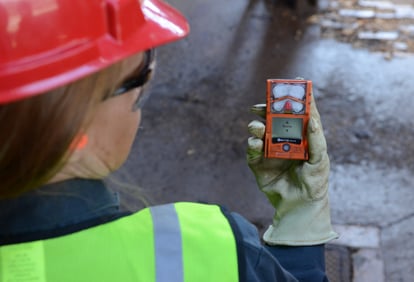
Closing Gaps in Communication
Gaps in communication between operators and safety managers can happen at any facility, but to what extent? In some facilities, gaps in communication can mean not being able to easily share gas hazard alarms between operators and safety managers who are working near one another. It can extend further, however, when safety managers can’t access real-time data, such as gas readings or emergency alerts, from another building on the other side of the facility – leaving workers stranded without help. Either way, you need to close any gaps in communication to ensure the safety of workers.
By implementing an IIoT-enabled gas detection program, such as one backed by our iNet platform, you can easily share alarms and gas readings between operators and safety managers, making it easier to respond to gas hazards, panic alarms, or man-down alarms quickly. Depending on how robust your safety program is, safety managers can even receive this information directly to their own gas detector or can implement remote live monitoring options to see readings instantly on a phone or laptop.
Seeing Site Hazards Like Never Before
Another important component of an IIoT-enabled gas detection program is clear visibility into site hazards, so you not only know who has been exposed to gases, but where.
Here, facilities can add IIoT technologies in areas where they believe they’re getting hit with the most exposure. For example, if a worker is wearing a Ventis® Pro5 in a high-exposure area and it detects a hazardous gas, it will connect to pre-placed beacons and mark the location. The information from the beacon is sent to the cloud in real time to alert safety managers of hazards.
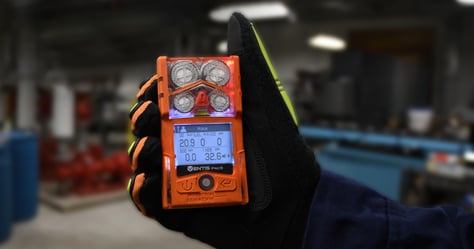
Gas monitors with datalogging capabilities, meanwhile, allow data from a pre-placed beacon to be stored on the monitor and is automatically uploaded to the cloud when the device is docked for the day. This enables safety managers to look deeper into what’s happening around their site by generating alarm reports with information like who had the gas monitor, if or when they were exposed to gases, how much gas they were exposed to, and where the exposures came from. This historical data is particularly useful for incident investigations.
With cloud-based gas detection software linked directly to workers’ gas monitors, you can get real-time alerts when workers enter restricted areas or are exposed to hazards, as well as identify high-risk areas with visual summaries of gas alarms by type, location, user, and more – allowing you to manage your team from anywhere, even if they’re in different locations.
Streamlining Operations
No matter how you slice it, lost gas monitors are inevitable and trying to find the equipment you need can cause unnecessary stress, harm your bottom line, or create unsafe working conditions.
While deciding on the right IIoT-backed gas detection solution for your facility, it’s important to keep a few questions in mind such as “how are you losing monitors?” or “who exactly is using your gas detectors – employees or general contractors?” among many others. Knowing exactly how you’re losing monitors is critical in determining both what type of equipment you need, and how much, for your gas detection program.
To streamline operations and cut down on lost equipment, turn to gas detection maintenance tools that show your entire fleet in real time, making equipment tracking and management easy so you lose fewer monitors.
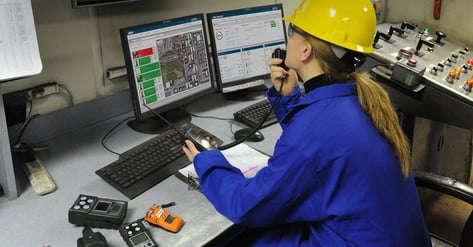
Certain solutions, for example, include gas detection management software that provides clear visibility into your process so you can easily manage hazards, people, and equipment from anywhere, with one dashboard. Additionally, by managing all equipment from one dashboard, you can see who is assigned to each gas monitor and find out what happened if it isn’t returned.
Ensuring Seamless Production and Reliability
A robust, full-service gas detection and maintenance program goes beyond keeping your team safe, and while it can help streamline operations it can also improve production uptime and reliability. When you go into work, you expect your gas monitors to be calibrated and ready to use. So, when monitors are broken or calibration gas is empty, you can’t do your job effectively (or in some cases, at all).
Gas detection programs backed by cloud-based services ensure that you always have the equipment you need when you need it to keep production up and running without any hiccups. A standard oxygen sensor, for example, is typically only good for 18-24 months. Once the sensor goes down, who is going to repair it? With IIoT technologies supporting your gas detection and maintenance program, you can use predictive analytics to know when sensors will fail. This service option will then automatically ship out a new sensor, so you have a replacement ready to go before you even know there’s a problem with the original sensor. This helps you minimize production downtime.
Overall, keeping teams connected through IIoT-enabled gas detectors and robust cloud-based software options helps create a reliable gas detection, maintenance, and safety program that ensures teams can successfully conquer their own Mount Everest. Whether you’re responding quicker to gas hazards with real-time visibility and alerts, identifying high-risk areas with visual summaries of alarms, or simply knowing which monitors have been bumped and calibrated, gas detection programs backed by IIoT networks and applications are the key to staying connected and safe no matter where workers are.
